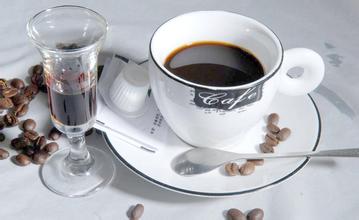Strong sweetness of Panamanian jadeite manor boutique coffee bean cultivation geographical location, climate, altitude is simple

Floral, tropical fruit, intense sweetness; these are the feelings that rose summer has always brought us. Properly baked, they make you feel like sipping the fragrance of a bouquet of flowers. In case you haven't heard the story, Rose Summer is an ancient native from Ethiopia that was brought into Costa Rica as a coffee sample and distributed to several small farms for small-scale trials.
Not much attention was paid to the rose until the Esmeralda estate in Panama separated it from the rest and won the national coffee championship.
She's so extraordinary, fruity and floral, it's like a Yega Shefi from Ethiopia, Africa, halfway around the world. Of course, that's old news now. A few small farms are getting summer roses, and eager ones want to grow their own.
However, the results vary, depending on weather, soil and altitude, and the taste of this "star" variety does not seem to be the same in different geographical locations. But in the Actanango region, we see typical rosewood characteristics: slender bean shapes, changes in baking, and elegant, ripened flavors in the cup
Country of Origin: Panama
[Origin]: Boquete
[Altitude]: 1550-1700 m
[Manor]: Emerald Manor
[Processing method]: Wet-Process Style Washing
[Level: SHB]
[Size]: 17 mesh or more
[Breed]: Kaduai
[Climate]: rainy season May-December, dry season January-April
[Soil]: Volcanic soil
[Recommended baking degree]: Medium (CITY+ ~ FULL CITY)
Emerald Estate covers an area of about 12.5 hectares, which is a miniature small estate in Panama. According to the owner's dictation, 8.5 hectares of it are planted with varieties ranging from common typica, red catuai and Pacamara. Since 2008, Geisha coffee has been grown in a small number of areas, and now accounts for nearly half of the total; the estate is about 1500 meters to 1675 meters above sea level, and in addition to coffee cultivation, there are 3.5 hectares of primary forest and various fruit trees, including cypress, pine and eucalyptus trees in the mountains, which is a typical example of a self-sufficient estate.
Castillo is best known for winning the 2011 Best of Panama contest with a cup score of 92.3 points, beating Emerald Manor, the most iconic and successive champion at the time, and breaking the year's record for gold to $70.25 per pound. In the following years, there have been numerous outstanding results, and the final competition batches of Panama have been selected for the year, including the fifth place in the washed geisha group in 2012, the tenth place in the washed geisha group in 2013, the twelfth place in the washed geisha group in 2014, and the fourteenth place in the washed geisha group in 2015.
Finca La Valentina, owned by the Osorio family, is located in Panama, Boquete,Horqueta, where the terrain varies greatly and the climate is humid. The average temperature is around 15-20 degrees. In addition, there is a forest surrounding the slate mine and two clear streams next to the estate. The resources are quite rich. It is a great planting paradise.
FincaLaValentina is dedicated to the cultivation of fine beans. In addition to personal care, the unique microclimate of the area also creates their Arabica coffee beans (SHB), which are of outstanding high quality. In 2011, the estate's Geisha ARISTAR won first place in the Panama competition. In 2012, GeishaARISTAR and Valentina also scored 87.07 and 84.66 respectively.
In the early years, the identification of top coffee mostly followed Japan, while Geisha carried the hurricane power to sweep the coffee world. This coffee revolution was fierce, so that the king and queen ~ Jamaica Blue Mountain and Hawaii Kona, who had occupied the throne of coffee kingdom for a long time, also had to retreat. This wild variety originally originated in Ethiopia, after experiencing countless battles, is now valued in all major coffee producing areas, and its best spokesman is the "La Esmeralda" estate from Panama. Esmeralda Estate's Rosedale coffee is the most famous of the Rosedale varieties. Panama Rosedale grows at an altitude of 1,500-1,650 meters. Its unique growing environment makes it unique in flavor:
Dry fragrance: tea fragrance, flower fragrance (magnolia, tulip) vanilla plant, milk fragrance, brown sugar sweet, high champagne and aroma rise.
Wet fragrance: apricot, caramel, milk, flower fragrance.
Sip: Oil texture is good, delicate pear mountain special tea feeling, high-grade white wine astringent but immediately turned into a delicate smooth Body full of mouth.
Berry candy and spice sweet intertwining, accompanied by floral emission, full of floral aftertaste, sweet fruit and body is quite persistent, the lower the temperature, the more delicate the acid.
La Esmeralda has so far won 12 coffee competitions and three online public bidding records: $21 in 2004,$50.25 in 2006 and $130 in 2007! Of course, other countries have also bid a pound of good coffee close to 50 dollars (Brazil CoE champion Fazenda Santa Inês in 2005), El Injerto in 2008 Guatemala CoE champion 80.20 dollars; but you pay attention to the time point, that is, La Esmeralda bid record, before no bid price surpassed her, then, but she will surpass others, saying she is the record maker, no fluke!
Esmeralda Farm Glorious Experience
Panama's highest grade coffee ranked first for four consecutive years in 2004, 2005, 2006 and 2007!
SCAA World Coffee Cup ranking 2005, 2006, 2007 for 3 consecutive years No. 1!
Tropical Rainforest Conservation Group coffee quality cup test ranking 2004, 2006, 2007 No. 1!
Important Notice :
前街咖啡 FrontStreet Coffee has moved to new addredd:
FrontStreet Coffee Address: 315,Donghua East Road,GuangZhou
Tel:020 38364473
- Prev

A brief introduction to the market price of boutique coffee beans in the bright and sour Panamanian jadeite manor
What is more surprising is that on the basis of very excellent quality, the very people-friendly price of this coffee bean makes the performance-to-price ratio of this coffee bean. What is special about this coffee bean is that it is made up of three varieties, of which 40% are rosy summer varieties, giving this coffee a distinct rosy summer flavor. According to the information obtained after consulting, due to the historical reasons of the manor, in order to pursue the output at that time
- Next

A brief introduction to the treatment method of grinding degree and baking degree of fine coffee beans in Panamanian jadeite manor with bright taste
The distinction between Panamanian growing areas mainly depends on the sales situation of coffee, but mostly on geographical distribution. In the past, coffee was widely spread, and the following areas are actually one area, but these areas are closely linked. Boquete, this is the Panamanian region that we are most familiar with. The special mountainous terrain of this area forms a microclimate which is very suitable for growing coffee. A cool day
Related
- Does Rose Summer choose Blue, Green or Red? Detailed explanation of Rose Summer Coffee plots and Classification in Panamanian Jade Manor
- What is the difference between the origin, producing area, processing plant, cooperative and manor of coffee beans?
- How fine does the espresso powder fit? how to grind the espresso?
- Sca coffee roasting degree color card coffee roasting degree 8 roasting color values what do you mean?
- The practice of lattes: how to make lattes at home
- Introduction to Indonesian Fine Coffee beans-- Java Coffee producing area of Indonesian Arabica Coffee
- How much will the flavor of light and medium roasted rose summer be expressed? What baking level is rose summer suitable for?
- Introduction to the characteristics of washing, sun-drying or wet-planing coffee commonly used in Mantenin, Indonesia
- Price characteristics of Arabica Coffee Bean Starbucks introduction to Manning Coffee Bean Taste producing area Variety Manor
- What is the authentic Yega flavor? What are the flavor characteristics of the really excellent Yejasuffi coffee beans?

